The invention of American clothes
And the forgotten designer whose ideas we're still wearing today
Welcome to Concorde, Blackbird Spyplane’s “women’s vertical” that the fellas love as well. Every edition is archived here.
The world’s best store just started shipping to the U.S. again. Check it out in our monumental new list of the 50 Slappiest Shops across the Spyplane Universe.
Mach 3+ city intel for traveling the entire planet is here.
Our brand-new Cool Mom Style Guide is here.
A designer who reigns supreme in my (Erin’s) personal pantheon is Claire McCardell. She’s up there in the Concorde Canon with real ones like Bonnie Cashin, Vuokko Nurmesniemi and Willi Smith. What they have in common is they set out to make great clothes for people like you and me.
McCardell preceded them all, though. She wanted to do something crazy back in the 1940s: make functional, beautifully designed clothes that women could buy right off the rack. She wasn’t interested in designing for society ladies with nothing better to do than change clothes three times a day. She was thinking of modern women who were, like her, hoofing it to work, going out afterward, and traveling and playing sports on the weekend. Why couldn’t women wear pants with pockets, and move freely in unconstrained clothes? As early as the 1930s, she was navigating ideas that remain buzzwords today: inclusive sizing, capsule wardrobes, activewear, and unisex materials, colors and styles.
And unlike her male counterparts in Paris, she wasn’t set-designing some fantasy where women served, ultimately, as beautiful props. No wonder Georgia O’Keeffe, Greta Garbo and Lauren Bacall were McCardell fans.
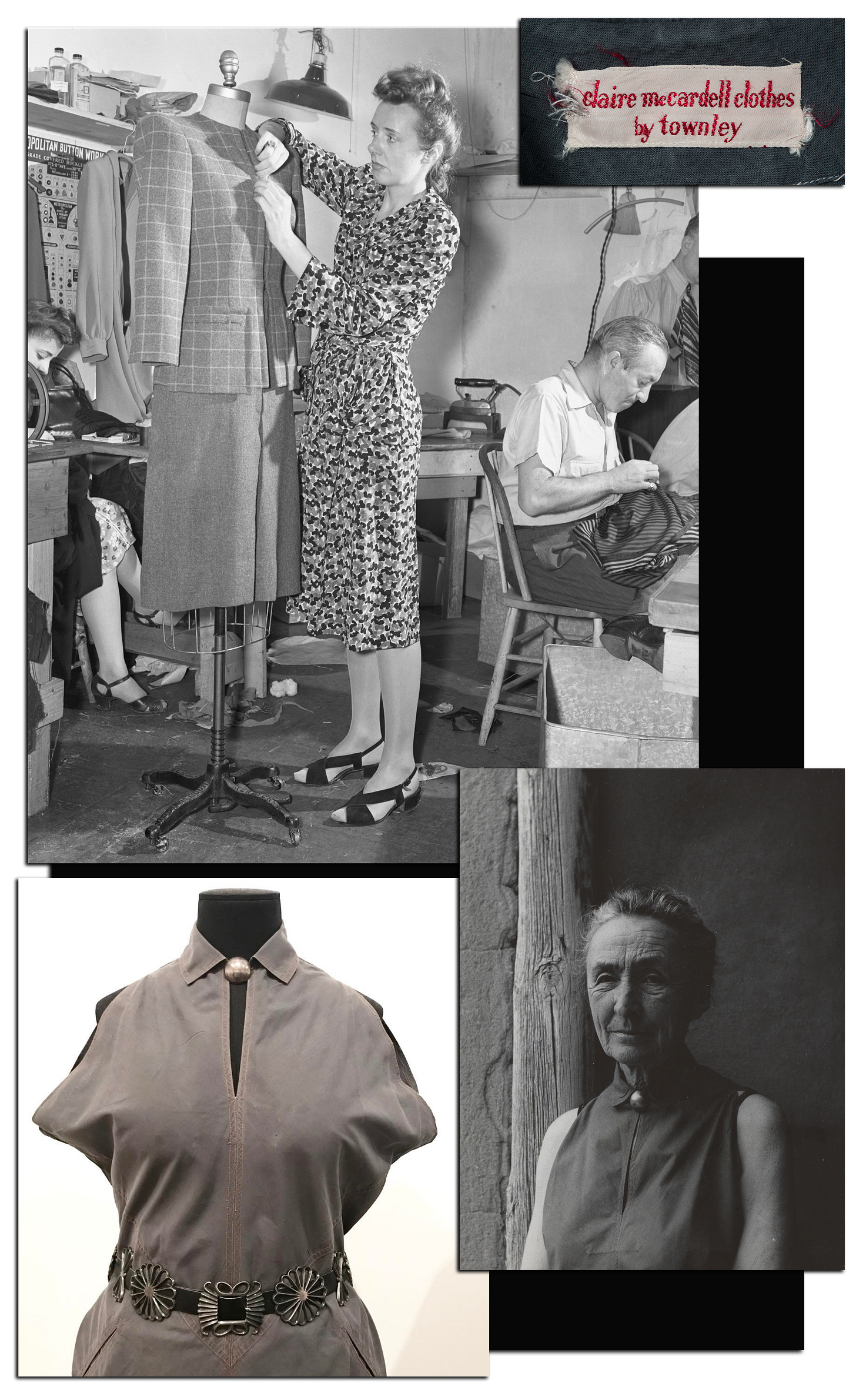
The first McCardell piece I saw in person was a deceptively simple dress that O’Keeffe herself once owned, in an exhibit about her at the Brooklyn Museum back in 2017. My photo is above bottom left. Maybe the faintly patinated gray cotton looks like nothing much to you, but I was mesmerized. I hadn’t seen ready-to-wear this elegantly constructed before: cut on the bias for a beautiful drape, it has a yoke at the waist, slit pockets at the hips, split sleeves and a fold-over collar that could be pinned at the throat. I could tell it would look amazing on, and feel comfortable as a t-shirt. It’s a gown masquerading as a smock. Or vice versa: O’Keeffe felt so good in hers, she had a knockoff made in teal silk, which she wore as an evening dress. You can see both here.
Clearly this dress was designed by someone who understood women’s bodies and needs. I wondered why I couldn’t find something like this to wear today…
All of which brings us to this month, when I finished the fantastic new biography Claire McCardell: The Designer Who Set Women Free. I loved it, and called up the author, Elizabeth Evitts Dickinson, so I could stay in McCardell’s world a bit longer. Elizabeth told me she first saw McCardell’s clothes in a museum exhibit, too, and when she compared McCardell’s work to the inferior pieces she was wearing, she recalled, “I felt like we cracked some code on how to make elegant, pragmatic, thoughtful clothes, and then we forgot it.”
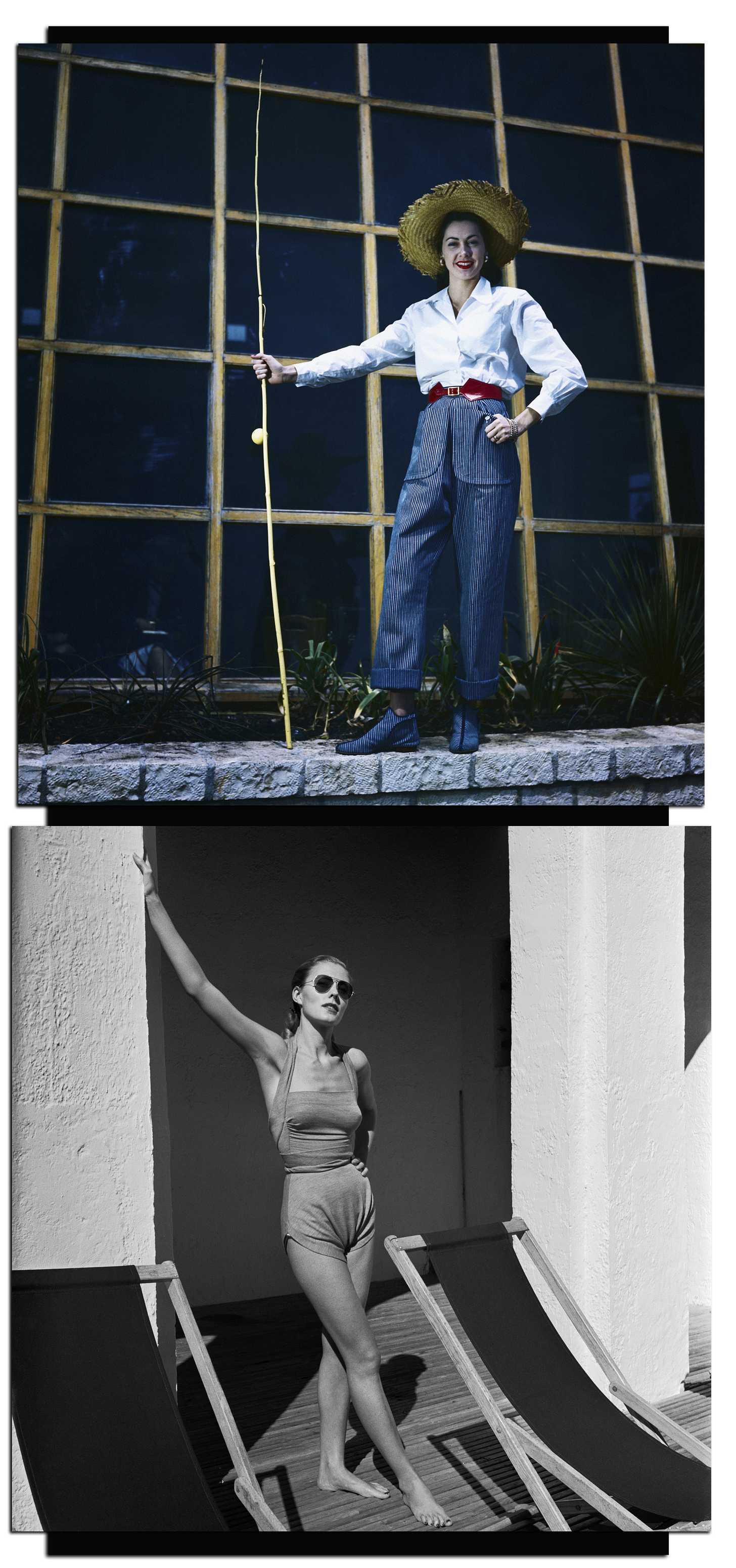
Indeed, we seem to have gone backwards: McCardell was the first American ready-to-wear designer, male or female, to get their name on a label. In 2025, most of the designers at top fashion houses are male. But the designers most people regard as the pinnacles of the American Look — Calvin Klein and Ralph Lauren — have admitted to being in McCardell’s debt, and I still see her ideas reheated in those lines’ new collections.
I had a lot to ask Elizabeth. And I wanted to understand why the first American designer to grace the cover of Time, a woman who introduced a ton of the ideas and garments we still encounter today — including hooded tops, leggings, denim, ballet flats, mix-and-match separates and wrap dresses — has been largely forgotten, and what we can all learn about how clothes work from learning a bit more about her.
THE INVENTION OF AMERICAN FASHION
Concorde: I got so much out of your book. Besides going deep into McCardell’s genius, there’s all this fascinating history of the American fashion industry, which she played a huge role in shaping.
Elizabeth Evitts Dickinson: “McCardell grew up in an era before the American design industry existed the way we understand it today. Most designers in America were taking boats over to Paris, seeing what the Parisians were doing, and then blatantly stealing or paying the license fee for those designs, and copying them in the garment manufacturing firms in New York, primarily. You couldn’t just go and buy things off the rack. Most people either made their own clothes by sewing them from memory or from pattern. Or, if you were middle or upper middle class, you had the means to bring in a dressmaker, which is what McCardell’s mother did.
“The fashion system was built originally on the monarchy, and then it was for the society woman. If you could afford it, you could have a wardrobe that carried you through the day: There was the day dress, and then you changed for teatime into a tea gown, and then, oh it’s evening now, you have to put on an evening gown. McCardell was questioning, why are we trying to mimic a system among the working class women in America based on what high-society people are doing? She wanted to know why couldn’t you just wear something throughout the day.”
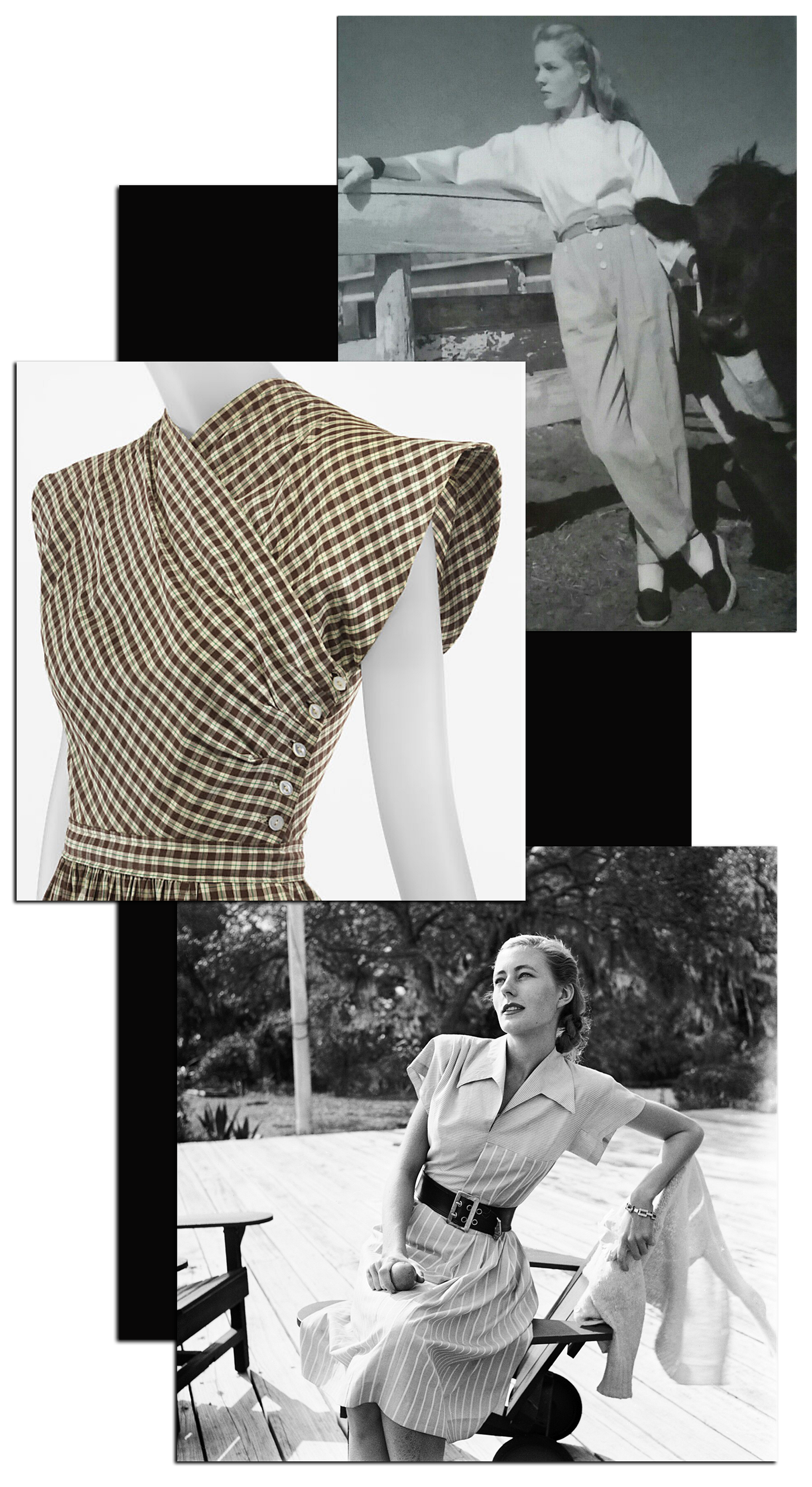
Concorde: That brings us to the idea of “sportswear,” which McCardell is credited with inventing. That’s a confusing term for people today, who probably think of leggings when they hear that word, whereas it signified more casual clothes — smocks, separates and wrap dresses, made from denim, cottons and wool. Why was that revolutionary?
Elizabeth Evitts Dickinson: “It is a confusing word, but really sportswear back then was an umbrella term that meant everything from bathing suits and playsuits to workwear and everyday clothes. McCardell was always fascinated with the ways in which her clothes were so different from those of her brothers. She was the oldest of four, and her three younger brothers were active in sports, as was she. She just felt this disdain and frustration about the gap between the pants with pockets and the men’s shirts that her brothers got to wear, which made a lot of sense, and then her trying to go out in the world and climb a tree in a dress, stockings and patent shoes… She felt like women’s clothing really inhibited her capacity to be active and be out in the world.
“The Parisians were certainly doing sportswear — much of what Coco Chanel was producing is considered elegant, custom-made sportswear, because it was that casual kind of look of, you know, pantsuits and pockets. But what she was doing was really for an upper-crust, well-heeled society woman who wasn't living a fully-fledged work life the way someone like Claire McCardell was.”
Concorde: Yes, her concern was very much to make a wardrobe for the modern working woman — who lived alone and did her own laundry.
Elizabeth Evitts Dickinson: “She was really pragmatic. One of the things that she did when she started designing clothes on her own was she made it so, for instance, all the closures were in the front, or the side, because she used to say, ‘You may live alone and like it, but if you wrench your arm trying to zip up a back zipper, you’re not going to love it for long.’”
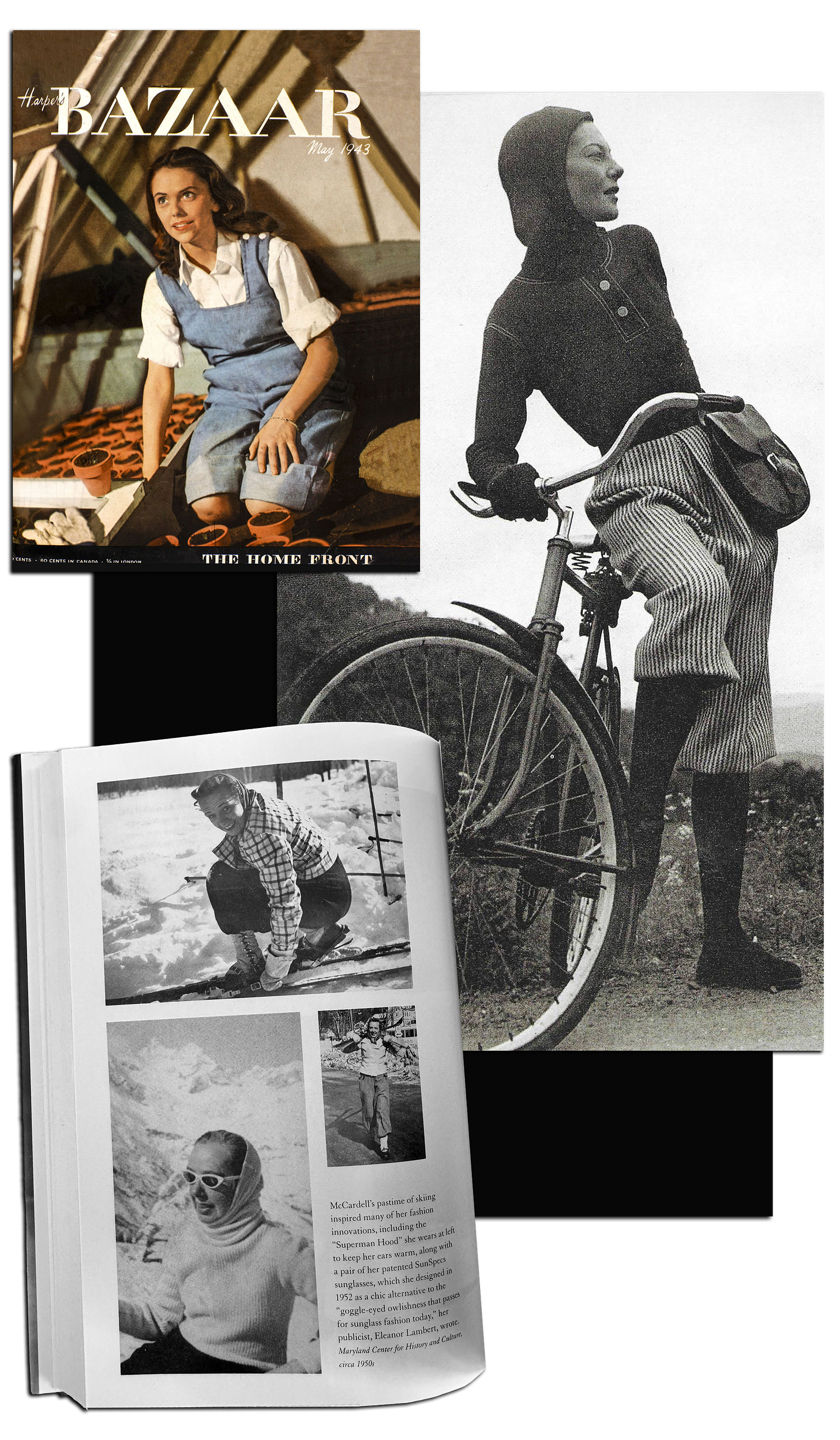
THE COOLEST THING YOU CAN PUT IN YOUR POCKETS IS YOUR HANDS
Concorde: She knew that how you feel in a garment is just as important, if not more so, than how you look. I jotted down this quote of hers, which is a pretty great definition of swag: “When you’re uncomfortable, you are likely to show it. You never look really well dressed when you’re conscious of what you have on.”
Elizabeth Evitts Dickinson: “That’s why she believed pockets were so important for women. Not just because they were practical and you could carry stuff, but you know that nervousness we all feel sometimes, when we just want something to do with our hands, and being able to put them in a pocket makes you look sort of effortlessly casual, a little bit more in command. McCardell was designing for this idea that if you wear what really fits your body and your lifestyle, then the clothes disappear, and you just see the woman. You just see the personality.”
Concorde: Let’s get into some of her most iconic designs. I didn’t know that she created the first ballet flats for everyday wear, working with Capezio. The other really liberating thing she designed is what became the modern bathing suit, instead of the full-length bathing costumes that women had to wear at the time.
Elizabeth Evitts Dickinson: “I think she found it so hilarious, really, that we would gender fabric or gender styles. Like the idea that a woman isn’t supposed to wear a tweed evening coat because tweed is meant for men’s wear. And she’s, like, ‘But I’m cold.’
“In 1934, she was so tired of lugging heavy trunks full of her clothes onto ships to go to Paris. She kept thinking to herself, ‘Well, men have suits, and suits are like a kit-of-parts, so how could a woman have that?’ And she created mix-and-match separates. At the time, nobody bought it, because the buyers couldn’t understand what she was doing. It took almost 10 years for the idea of mix-and-match separates to get into department stores. But she was, for the first time, marrying high design with mass production. She brought denim into women’s wear, she put hoods on her clothes, she effectively created leggings and leotards. And she did it in a way that was structurally really smart, because fit is a real issue. She hacked that by creating clothes, like the wrap dress, that a woman could fit to her body. We tend to credit Diane von Fürstenberg with that, but it was McCardell first.
“She brought a lot of creativity to severe limits in the clothing industry in America, particularly when World War II hit and there were rations. There were strict government rules about which fabrics could be used and how much of them. In many ways, this was the time McCardell just came alive. That’s how she came up with ballet flats. There were rations on leather, and so she went to a ballet slipper maker and said, ‘What if we made these ballet slippers out of fabrics that matched my dresses?’ And the ballet flat was born.”
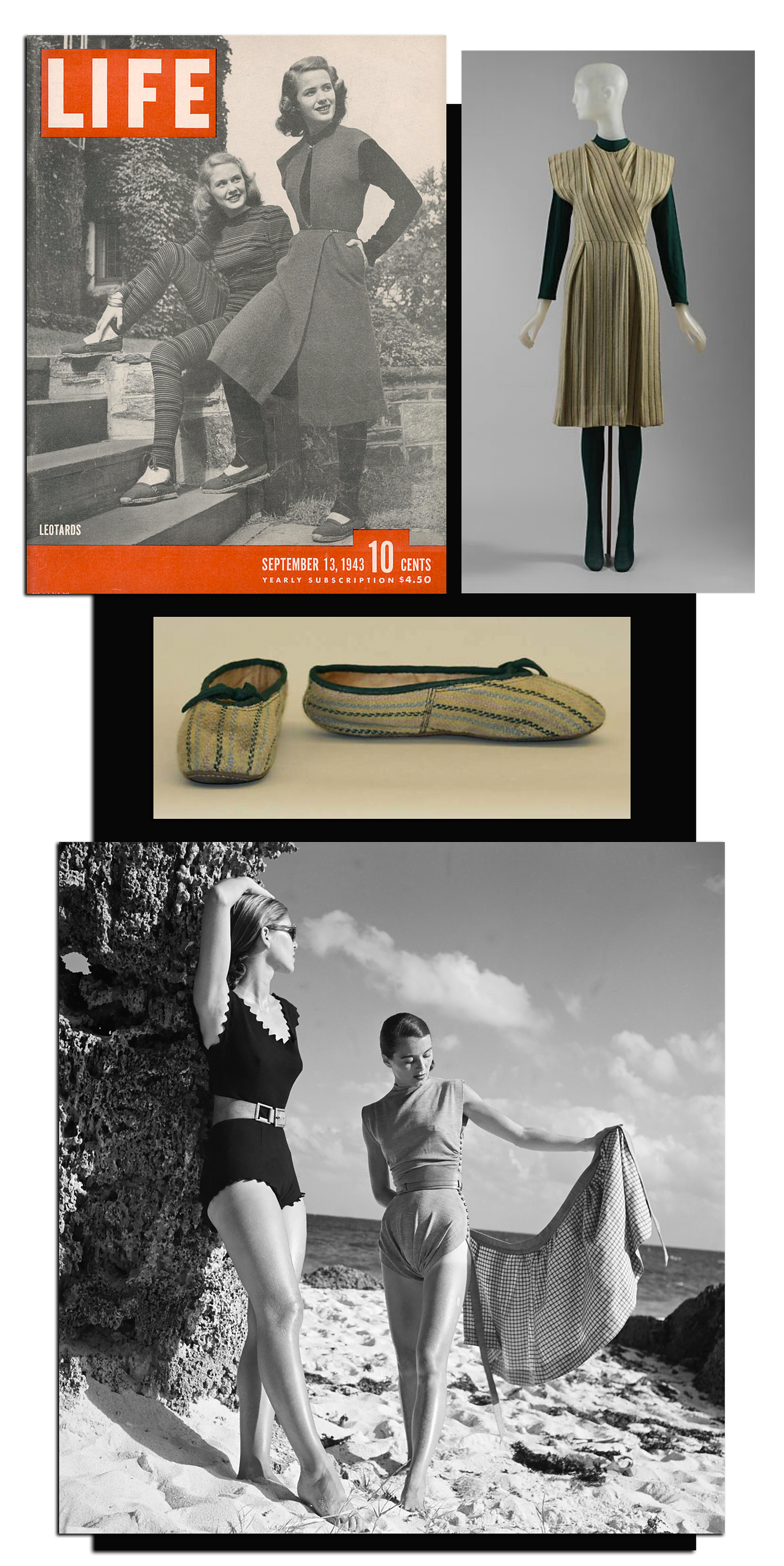
HOW SIZING WORKS
Concorde: One thing that blew me away was the idea that there wasn't standard sizing for women until 1941, and into the ‘50s they were still kind of “working on it.” They had standardized sizing for men starting around the Civil War, when they made military uniforms en masse, but it took over 80 years to get around to standard women’s sizing, which they tackled with a survey in the 1940s.
Elizabeth Evitts Dickinson: “Sizing for women’s clothes happened because of the Depression and the New Deal, and the administration was basically saying, it’s time for us to figure out how to successfully create ready-to-wear clothes for women, because they can’t afford to buy the wrong size and then tailor it. It was really the first time that they looked at sizing. Much of our sizing system still dates back to that very flawed first survey. And it is incredibly hard to size clothes.
“What’s interesting to me is what's happening today through designers like Eileen Fisher, who are trying to crack the code for making universal sizing. It is a technical feat because, of course, sizing doesn't go up exponentially. Just because you’re taller doesn’t mean your arms and bust get bigger, right? It’s so challenging to figure out how to size off-the-rack clothes for different bodies, which again is some of the genius of what McCardell did, in recognizing that you could create a dress that looked like a potato sack, but when you put it on your body, she had bias-cut the fabric and sewed it in such a way that you could belt it to your waist to fit your body, blouse it out, and you had a beautiful dress that could adjust to you.”
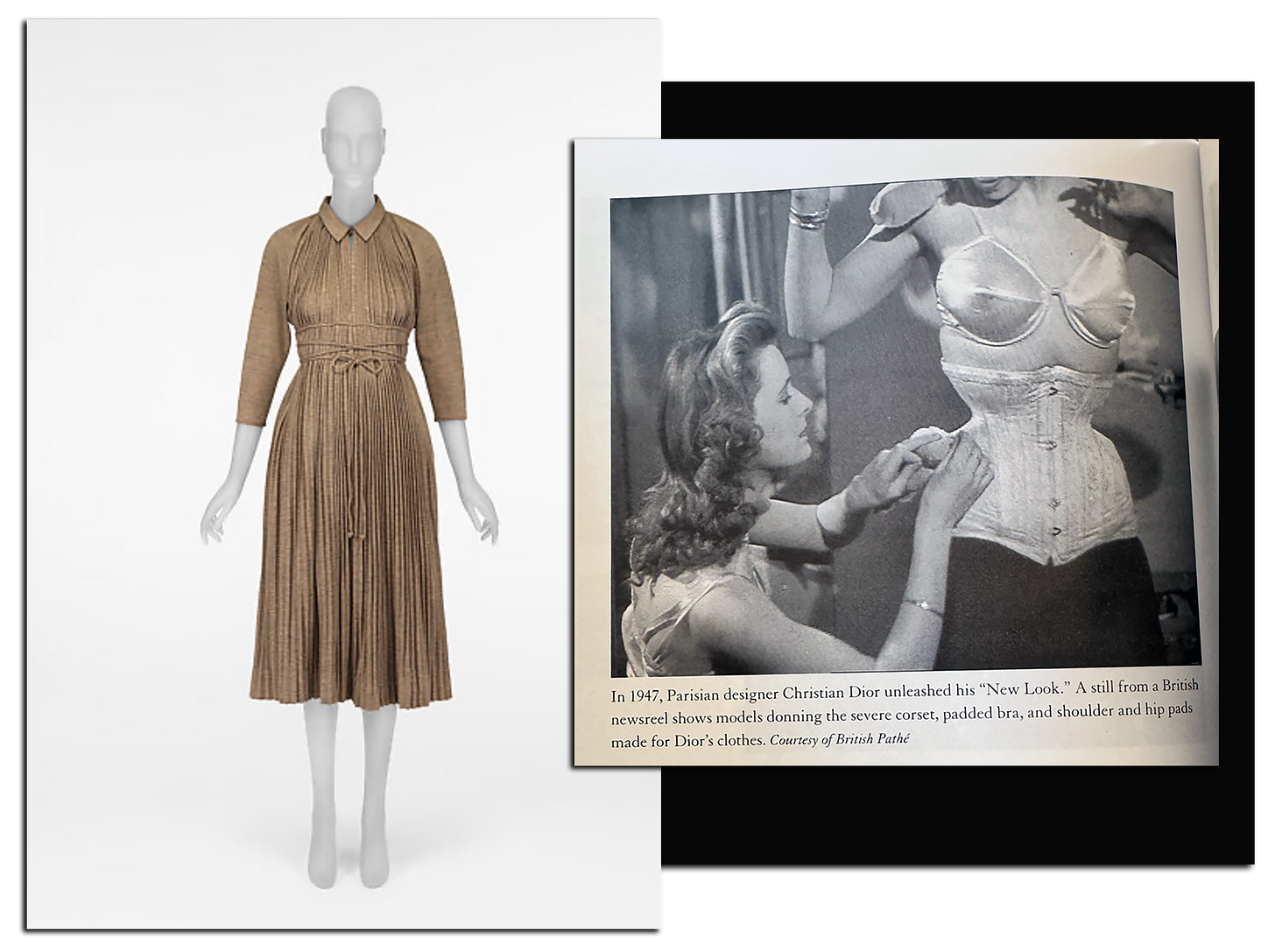
McCARDELL (CHILL) vs. DIOR (RIDICULOUS)
Concorde: In the book, you pit McCardell against her contemporary, Christian Dior. I grew up reading fashion magazines that taught me that Dior’s 1947 New Look collection was modern and groundbreaking, and that’s still the received wisdom today. I got mad reading your book, because it made me realize how regressive and sexist that Dior collection actually was.
Elizabeth Evitts Dickinson: “The reason I focus on this sort of McCardell versus Dior battle in the book is because she made all these extraordinary strides in creating what became known as the American Look, which is much of the sportswear we wear today. She did this in the ‘30s and ‘40s, and then World War II ends and Dior’s back on the scene. Technically, it's his first collection under his own name, and he creates what is dubbed ‘The New Look.’ McCardell always saw this as a regression to the old ways of structuring a woman’s body to make it an object of desire for men. Dior said, ‘I’m gonna save women from nature,’ and he was doing it by putting them into corsets, giving them padding, giving them big crinolines under their skirts. He wanted his women to have 18-inch waists, and as I write in the book, his models were fainting at the fittings because they were so constricted.
“The New Look wasp waist is back today, and it’s a reminder that just as fashion is cyclical, the rights of women are cyclical. So many of the clothes we wear now and take for granted were born of a time when they were seen as setting us free. They were meant to give women agency, and McCardell was so pissed when Dior came back with those corsets. She thought we were done with corsets.”
YOUNG DESIGN GREATS KEEPING THE VISION ALIVE
Concorde: You mentioned Eileen Fisher as someone who's doing work in the McCardell tradition in terms of inclusive sizing. Norma Kamali and Donna Karan have been interested in creating convertible wardrobes for women — especially when they first came on the scene. Are there any other designers that you feel are working today in the tradition of McCardell?
Elizabeth Evitts Dickinson: “Yeah, I think you’re absolutely right, you can draw a direct line to Donna Karan’s Seven Easy Pieces from McCardell’s separates. Tory Burch really believes in McCardell. I want to know who’s the next real McCardell, in terms of pioneering what comes next, in terms of ‘where are we going, what does it look like?’ That’s why I like your newsletter, because it’s interesting to be introduced to young designers in general who are trying to think through those same questions of how do you marry smart design with mass manufacturing?”
Concorde: Designers that come straight to mind who are designing for real women with real lives — busy, messy, beautiful, working lives — include SC103, Eckhaus Latta and Rachel Comey. The worldview of these designers is clear from what they create. I also see a through line with what Caron Callahan and Shaina Mote are doing. One label worth going into a bit of detail on is Man-tle, an Australian line we’ve written about since we started the newsletter in 2020, who make men’s and women’s clothes. What I see that’s similar to McCardell is that, with them, utility and beauty are never at odds. There’s a pragmatism, but also an idealism in their designs — a distaste for waste and fickle fashions — that they achieve through self-imposed constraints. Like McCardell, they avoid non-functional details, opt for industrial fasteners, and work very closely with textile manufacturers to create new fabrics. It almost becomes industrial design.
Elizabeth Evitts Dickinson: “McCardell loved very industrial closures, she liked brass hooks and she always believed the closures had to work. There were no buttons that didn’t button, there just for show. She didn’t slap a bow on something. Everything in the clothes had a purpose and was a designed element.”
Concorde: That makes me think of Bonnie Cashin, too, and her use of industrial hardware, supposedly inspired by the turn lock on her car’s trunk. I love Cashin's work, and she and McCardell were alive at the same time. Did she ever come up in your research?
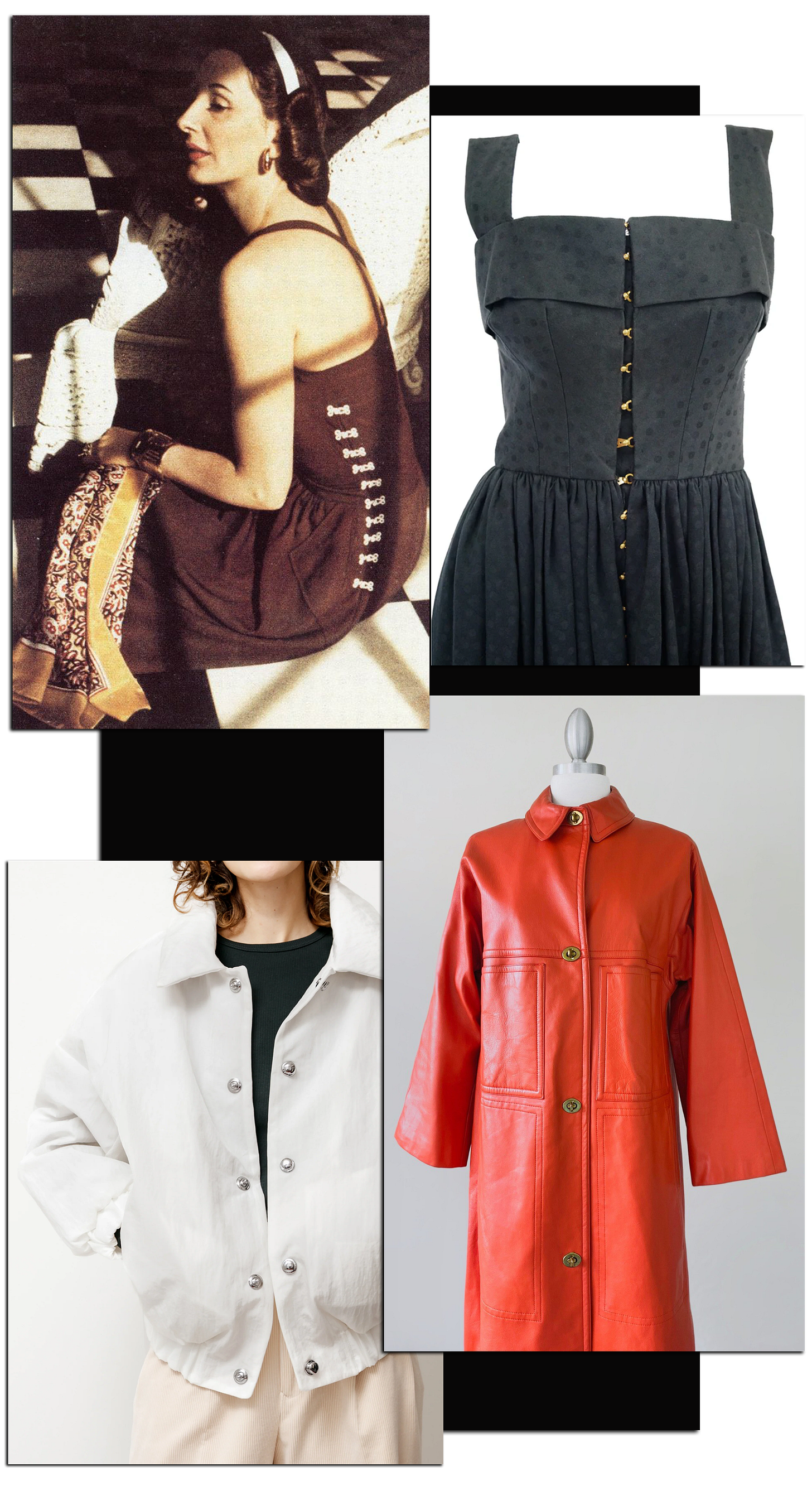
Elizabeth Evitts Dickinson: “They certainly crossed paths, but I didn’t have any specific source material that put them together. I did bring Bonnie Cashin in when I mentioned Dior, because she was equally annoyed by his ridiculous clothes. She was at the center of this constellation of really extraordinary women, including Elizabeth Hawes, who I’ve written an essay about for the catalog of an exhibition opening next year at the Cincinnati Art Museum. Hawes was kind of at the opposite end of the spectrum. She was more of a Let’s blow everything up person, like ‘the system is wrong, let’s explode it.’ McCardell was more, ‘How do I make it work from the inside and get it out there?’ I think we need both types of people.”
THE GHOST IN THE MACHINE
Concorde: You mention in the epilogue that big-name designers like Calvin Klein credit McCardell with creating sportswear. So I keep asking myself, why has McCardell been lost to time? I know she had no successor. I know she died early. But her line died with her, and it’s hard to comprehend.
Elizabeth Evitts Dickinson: “I mean, we can’t ignore the truth that women’s histories are often erased. And it isn’t just McCardell’s story that got lost to history. It’s also the many women I bring to life in the book: her contemporaries, who worked together to create and birth the American fashion industry. The American fashion industry really has women to credit for its existence.
“And for McCardell’s part, she died very young, at the height of her career, from cancer. It was 1958, and at the time, there was no model for how to carry on the label of a dead ready-to-wear designer. Whereas in Paris, which had centuries of the haute couture industry behind it, they had a very formalized system. Dior was part of a centuries-old business model, and he died within months of McCardell. He had already named his successor, and it was just understood that a Parisian label would carry on. There was precedent for that. But McCardell was sort of building the bridge herself.”
Claire McCardell: The Designer Who Set Women Free is available here. Elizabeth Evitts Dickinson is online here.
If you’re looking to go further:
Take a whirlwind tour through McCardell’s archive via The Met here.
There’s a newly published book by Nancy MacDonnell, Empresses of Seventh Avenue, that delves into the creation of the American fashion industry by McCardell and her contemporaries.
McCardell’s beloved pockets get a deep-dive in this book by Hannah Carlson.
Elizabeth Hawes, a peer of McCardell’s (who Elizabeth Evitts Dickinson mentions is a “the system is wrong, let’s explode it” type of gal), wrote a fantastic memoir/criticism of the fashion industry in 1938 called Fashion is Spinach.
Although most of McCardell’s designs have been lost to time or in the collection of museum, I did find a few vintage pieces and a first edition copy of her 1956 book What Shall I Wear? I put them for you in our Blackbird SpyMall.
The B.L.I.S.S. List — a handy rundown of Beautiful Life-Improving Spyplane Staples, from natural deodorant to socks to incense to bath towels — is here.
Classified-Tier Spyfriends request, share and receive Mach 3+ recommendations in our SpyTalk Chat Room.
We don’t run ads, we refuse gifts, and we don’t use affiliate links when we cover new clothes. We do use them for one-off secondhand finds on eBay, The RealReal and Etsy, plus books on the independent bookseller Bookshop. We laid out our position on affiliate links and spon here.


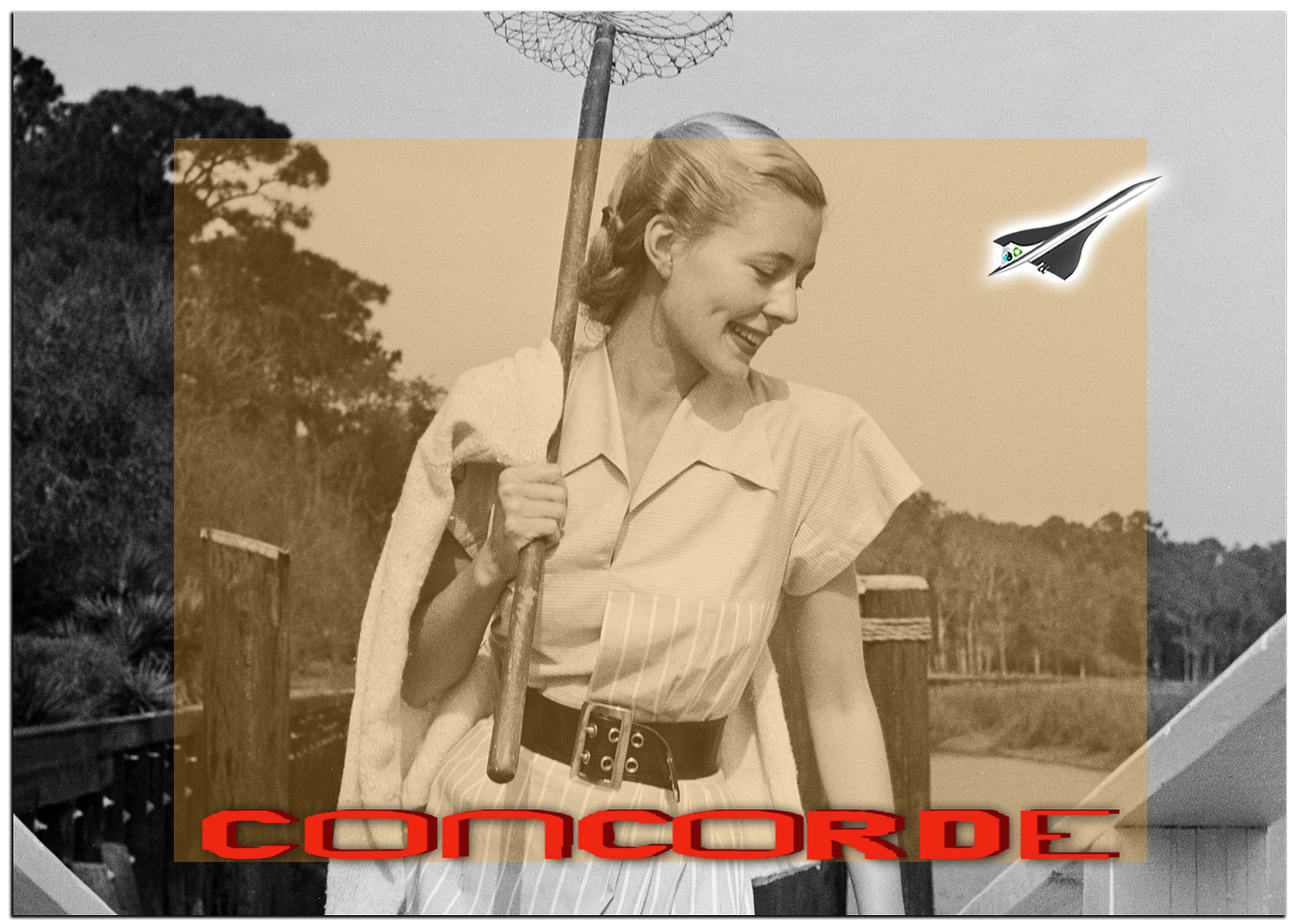
There are so many things to appreciate in this post. I love her shoes and whole look in that first photo, the trousers and matching booties, that Monastic dress is so beautiful, the mention of Willi Smith again, the striped legging and top combo on the Life cover and the leggings under the dress - that is THE WAY to wear leggings. And Georgia in that dress - god that woman had style. Love the Concorde! Thank you for the inspiration and fashion history details.
Loved reading this. It is transformative to see some of these garments in person. I had always read about Bonnie Cashin and admired her aesthetic and pioneer role in American fashion. Then I saw a few of her clothes in that Met exhibit (women dressing women? Is that what it was called?) and I was blown away. I could not stop thinking about it until I bought one of those leather coats with toggles ♥️.
I remember taking some post war history class in college that focused on the radical changes to how women were treated during that period (lots on this topic out there) that actually included content on Dior vs. Chanel and how he took women back decades after Chanel had liberated them. Women acquired a lot of agency during the way because society needed them to (all the young men were gone) so when the men came back….we got suburbs, nice kitchens and cinched waists.